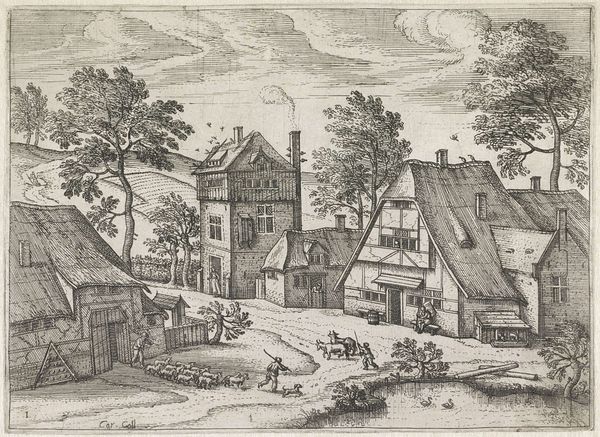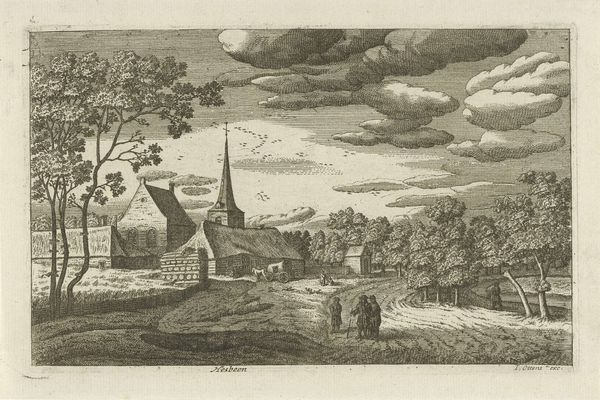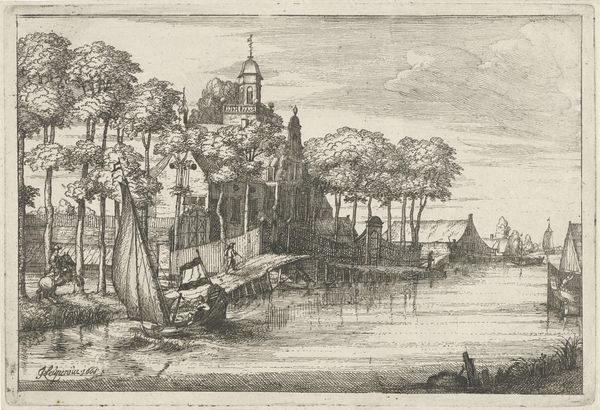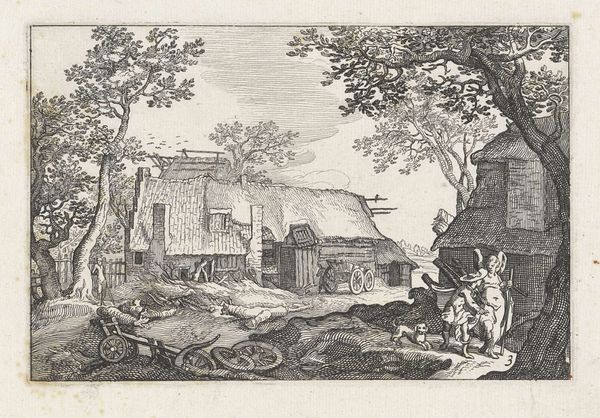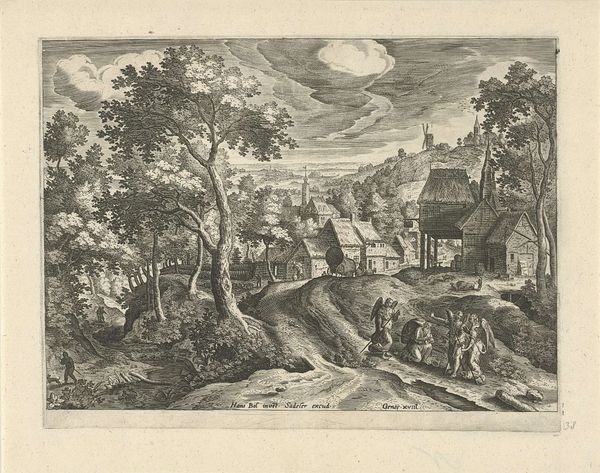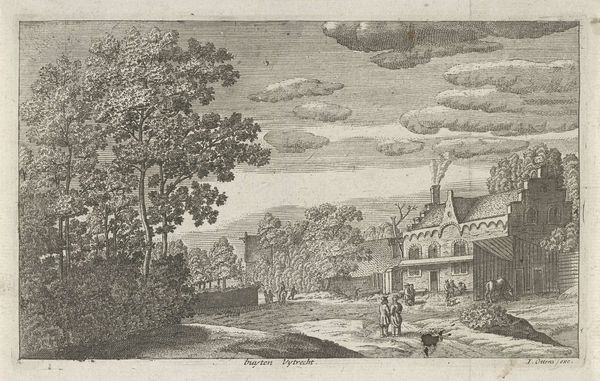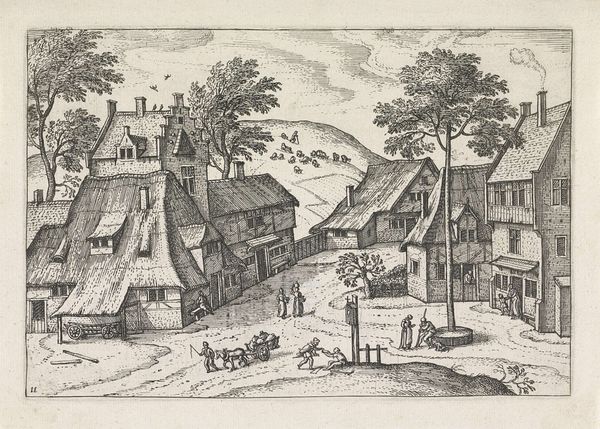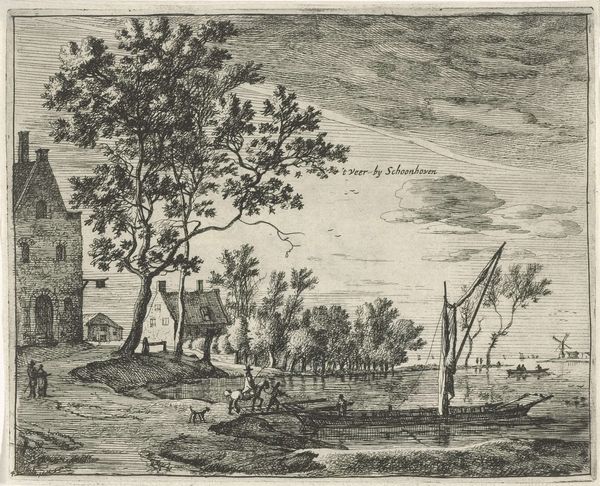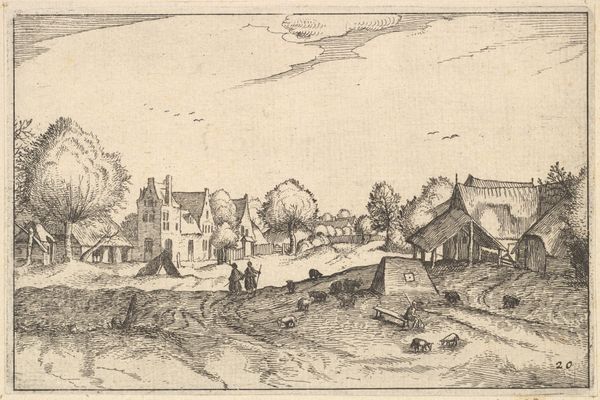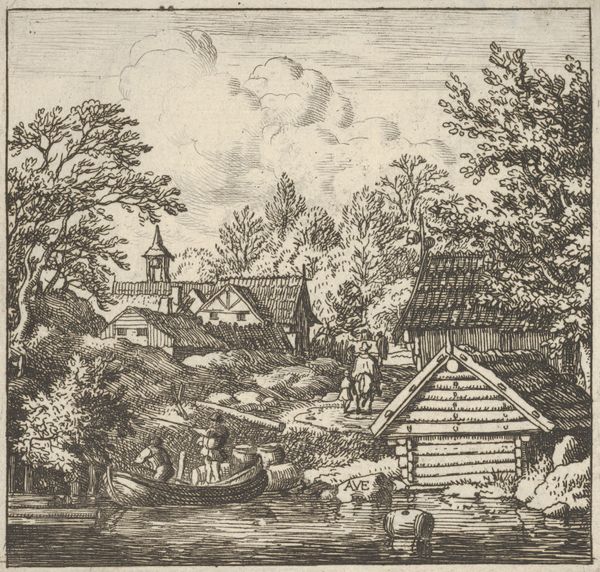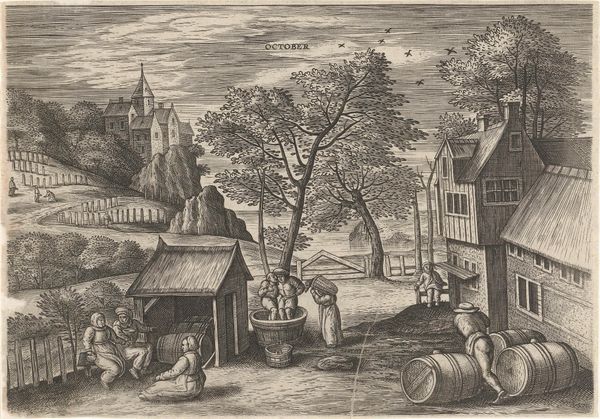
print, engraving
#
medieval
# print
#
landscape
#
genre-painting
#
northern-renaissance
#
engraving
Dimensions: height 155 mm, width 205 mm
Copyright: Rijks Museum: Open Domain
This is ‘Herberg met waterput’, or ‘Inn with a Well’, an engraving by Joannes van Doetechum, a master of the Dutch Renaissance. Here, the well isn't merely a source of water; it’s a symbol of life, sustenance, and communal gathering. The well, deeply rooted in human history, from ancient Near Eastern courtyards to the Roman ‘puteus’, has always been a focal point. In this bucolic scene, the well stands in contrast to the inn, representing two kinds of thirsts: one quenched by water, the other by worldly pleasures. One can find wells represented in countless other works, often signifying purity or revelation, like the well in the biblical story of Rebecca. The act of drawing water—especially in its association with daily life and work—resonates with our most primal needs. The water-drawing gesture itself signifies a life-sustaining force. The cyclical nature of water mirrors our own existence. We are reminded of the human drama that unfolds around sources of water, where life is sustained, and stories are shared. The well, thus, becomes a point of reflection, drawing us into the depths of our own memories.
Comments
No comments
Be the first to comment and join the conversation on the ultimate creative platform.
